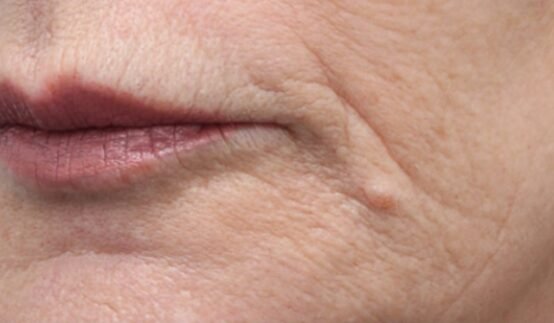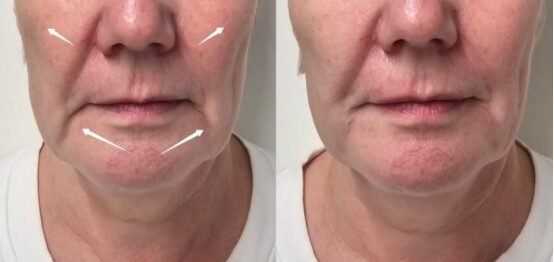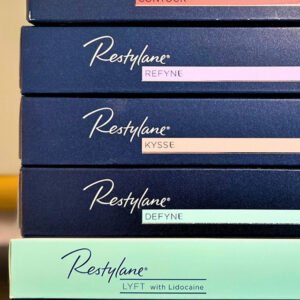Introduction
Aging is a natural part of life, but thanks to advancements in cosmetic dermatology, maintaining a youthful appearance has never been easier. Dermal fillers have emerged as a popular solution for combating visible signs of aging, particularly for those over 50. These minimally invasive treatments are designed to restore lost volume, smooth deep wrinkles, and enhance facial contours, offering a refreshed and natural look.
For individuals over 50, choosing the right dermal filler is crucial. Factors such as skin type, treatment goals, and safety considerations all play a role in determining the best option. This guide provides a detailed exploration of dermal fillers tailored for mature skin, helping readers make informed decisions.
Understanding Dermal Fillers
What Are Dermal Fillers?
Dermal fillers are injectable substances that restore volume, reduce wrinkles, and hydrate the skin. They work by filling in areas where aging has caused volume loss, such as the cheeks, under-eye hollows, and nasolabial folds. Some fillers also stimulate collagen production, improving skin elasticity over time.
Key Ingredients in Dermal Fillers
1.Hyaluronic Acid (HA): A naturally occurring substance that attracts and retains moisture, making it ideal for hydration and plumping. Examples: Juvederm, Restylane.
2.Calcium Hydroxylapatite (CaHA): Found in Radiesse, this ingredient provides structural support and stimulates collagen production.
3.Poly-L-Lactic Acid: The active component in Sculptra, it works gradually to rebuild collagen, offering long-lasting results.
4.Collagen: While less commonly used today, collagen-based fillers are effective for subtle enhancements.
Common Areas Treated After 50
Marionette Lines: Smooth vertical lines around the mouth.

Nasolabial Folds: Reduce deep folds running from the nose to the mouth.

Cheeks: Restore volume for a youthful contour.

Under-Eye Hollows: Address dark circles and sunken areas.

Jawline: Define and lift sagging skin.

Why Dermal Fillers Are Popular Among People Over 50
1.Restoring Youthful Contours: Aging causes volume loss in key areas of the face. Fillers can replace this lost volume, restoring a youthful appearance.
2.Addressing Deep Wrinkles: Unlike surface-level treatments, fillers smooth deeper wrinkles and folds effectively.
3.Non-Surgical Alternative: Avoiding the risks and downtime associated with surgical facelifts is a significant advantage.
4.Immediate Results: Most fillers provide instant improvements with minimal recovery time.
Factors to Consider When Choosing the Best Dermal Fillers
Skin Type and Condition
Thin or dry skin may benefit more from hydrating fillers like hyaluronic acid.
Mature skin with deep wrinkles may require fillers with more lifting power.
Desired Results
Subtle enhancements may call for softer fillers like Belotero Balance.
Dramatic contouring might require products like Radiesse or Sculptra.
Longevity of Results
Short-term fillers (6-12 months): Juvederm, Restylane.
Long-term fillers (1-2 years or more): Radiesse filler, Sculptra.
Safety and Practitioner Expertise
Choosing a board-certified practitioner ensures proper application and reduces risks. Discussing medical history and expectations is essential.
Budget Considerations
Prices range from $500 to $2,000 per treatment, depending on the filler type and area treated. Discuss costs upfront with your provider.
Popular Dermal Fillers for People in Their 50s
Juvederm Range
Pros: Excellent for deep wrinkles and hydration.
Cons: Shorter lifespan compared to some alternatives.
Price Range: $600-$1,200 per syringe.
Restylane Range
Pros: Versatile for both fine lines and deeper folds.
Cons: Potential for swelling in sensitive areas.
Price Range: $500-$800 per syringe.
Radiesse
Pros: Provides immediate lift and stimulates collagen.
Cons: Not ideal for very fine lines.
Price Range: $700-$1,500 per syringe.
Sculptra Aesthetic
Pros: Long-lasting results through collagen regeneration.
Cons: Requires multiple sessions for optimal results.
Price Range: $800-$1,200 per vial.
Belotero Balance
Pros: Perfect for delicate areas like under-eyes and fine lines.
Cons: May not be effective for deeper wrinkles.
Price Range: $400-$600 per syringe.
Exploring Facelift Alternatives for People Over 50
1.Thread Lifts: Minimally invasive and effective for mild sagging.
2.Ultherapy: Uses ultrasound to tighten skin non-surgically.
3.Radiofrequency Treatments: Stimulates collagen to improve skin texture and elasticity.
4.Combination Treatments: Pairing fillers with Botox or skin resurfacing enhances overall results.
Aftercare and Maintenance Tips Post-Treatment
Condition analysis: After cosmetic surgery, you need to pay attention to the following points: follow the doctor’s advice, keep the wound clean, avoid strenuous exercise, and have regular follow-up visits, etc., to ensure smooth recovery and good results after surgery.
- Follow the doctor’s advice: Care should be strictly carried out according to the doctor’s advice after surgery. The use of drugs, dietary adjustments, and guidance on lifestyle should all be implemented specifically.
- Keep the wound clean: The wound needs special care after surgery. Gently clean the wound with sterile saline or disinfectant every day, and change to a clean dressing to prevent infection.
- Avoid strenuous exercise: Strenuous exercise and heavy physical labor should be avoided after surgery. It is generally recommended to rest for at least two weeks, and the specific time is adjusted according to the type of surgery and recovery.
- Diet conditioning: The diet after surgery should be light, and spicy and irritating foods should be avoided. Eating more foods rich in vitamins and proteins will help wound healing.
- Regular follow-up visits: Return to the hospital for follow-up on time so that the doctor can understand the recovery progress in time and find and deal with any potential problems. It is generally recommended to have a follow-up visit one week, one month, and three months after surgery.
- Protect the wound: Avoid direct sunlight on the surgical site, especially after facial plastic surgery. Wear a wide-brimmed hat or use sunscreen to prevent pigmentation.
- Psychological adjustment: You may experience psychological fluctuations after surgery, so you should maintain a positive attitude and seek professional psychological support when necessary.
Proper care will help to recover faster, reduce adverse reactions, and improve the final effect of plastic surgery.
How to Prepare for a Dermal Filler Treatment
Before plastic surgery, a series of preparations are required to ensure the safety and success of the surgery. Here are some specific points to note:
- Physical health assessment: A comprehensive physical examination and health assessment, including blood tests, electrocardiograms, etc., is required. This helps to confirm whether you are suitable for surgery and discover potential health problems.
- Quitting smoking and drinking: Stop smoking and drinking at least two weeks before surgery. Smoking affects blood circulation and delays wound healing; alcohol may increase the risk of bleeding.
- Medication management: Inform your doctor of all medications currently being used, including prescription drugs, over-the-counter drugs, and health products. Some drugs, such as aspirin and certain herbal remedies, may need to be suspended because they increase the risk of bleeding.
- Nutritional adjustment: Maintaining a balanced diet and consuming enough protein, vitamins, and minerals will help your body recover. You can consult a professional nutritionist before surgery to develop a reasonable meal plan.
- Psychological preparation: Communicate fully with the plastic surgeon to understand the expected effects and possible risks of the surgery and be mentally prepared. If necessary, you can seek psychological counseling services.
- Confirmation of surgical details: Determine the surgical plan, understand the surgical process, postoperative care requirements and follow-up arrangements. Ensure a clear understanding of all aspects of the operation.
- Preoperative rest: Ensure adequate sleep to help improve physical condition. Avoid overwork and maintain a good mental state.
- Environmental preparation: Arrange a postoperative recovery environment, including using a comfortable bed, preparing medication and auxiliary supplies. Ensure that someone can provide help and care after surgery.
Through the above preparations, the risk of surgery can be effectively reduced and rapid recovery after surgery can be promoted.
How long can plastic surgery last at the age of 50?
A facelift at the age of 50 can generally last for about 5 to 8 years, depending on the individual’s physical condition.
Facelift surgery mainly refers to making an incision in the hidden part of the temples, and then the loose skin tissue on the face can be properly lifted and tightened. Finally, a sterile scalpel can be used to remove the loose skin tissue. After suturing the wound, the effect of tightening the facial skin can be achieved. Due to local damage during the operation, it will take about two to three months to see obvious results. If the individual’s physical condition is relatively good and the subsequent care measures are relatively appropriate, the maintenance time is relatively long, generally about 8 years. If the individual’s physical condition is relatively weak and the care measures are improper, it may last about 5 years.
Can people in their 50s still have plastic surgery?
People in their 50s can have plastic surgery, but they need to make a comprehensive assessment and decision under the guidance of a doctor.
Age itself is not a decisive factor, because the indications for plastic surgery are not limited to young people. However, with age, the physiological functions and metabolic rates of the human body change, which may affect the risks and recovery process of the surgery. Before considering plastic surgery, doctors usually evaluate the patient’s overall health, history of drug allergies, chronic diseases and other factors. If the patient has a serious heart disease, high blood pressure, diabetes and other chronic diseases, then the risk of surgery may increase. In addition, some drugs may also affect the safety and effectiveness of the operation. For people in their 50s, common plastic surgery includes face lifting, eye plastic surgery, rhinoplasty, etc. These surgeries can help improve appearance, improve self-confidence and quality of life. However, it should be noted that plastic surgery cannot completely solve the problems caused by age, such as sagging skin, wrinkles, etc. Therefore, you should fully understand your expectations and risks before choosing surgery.
In short, people in their 50s can consider plastic surgery, but they need to be more cautious and meticulous. It is important to have a comprehensive physical examination before plastic surgery, consult a professional plastic surgeon, maintain a stable psychological quality, choose the right surgical plan, and put safety and health first. Plastic surgery is not just about changing your appearance, but more importantly, it is about maintaining health and confidence.
Conclusion
Dermal fillers offer an effective, non-surgical solution to combat the signs of aging for individuals over 50. By choosing the right filler and working with a qualified practitioner, you can achieve natural, youthful results tailored to your needs. Consult a professional today to explore your options and embrace the benefits of dermal fillers.
References
1.American Society of Plastic Surgeons: Dermal Fillers
2.Mayo Clinic: Cosmetic Procedures



